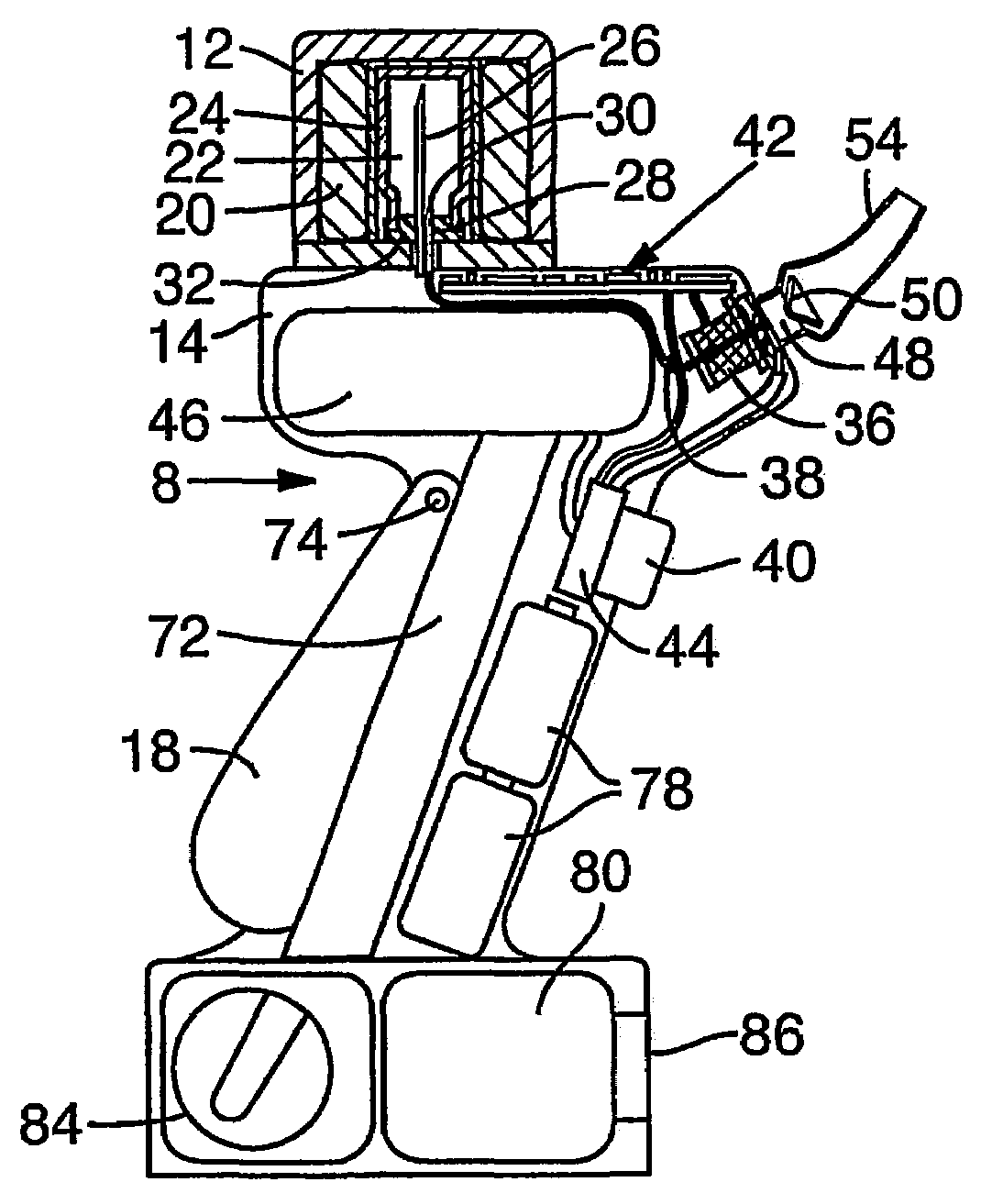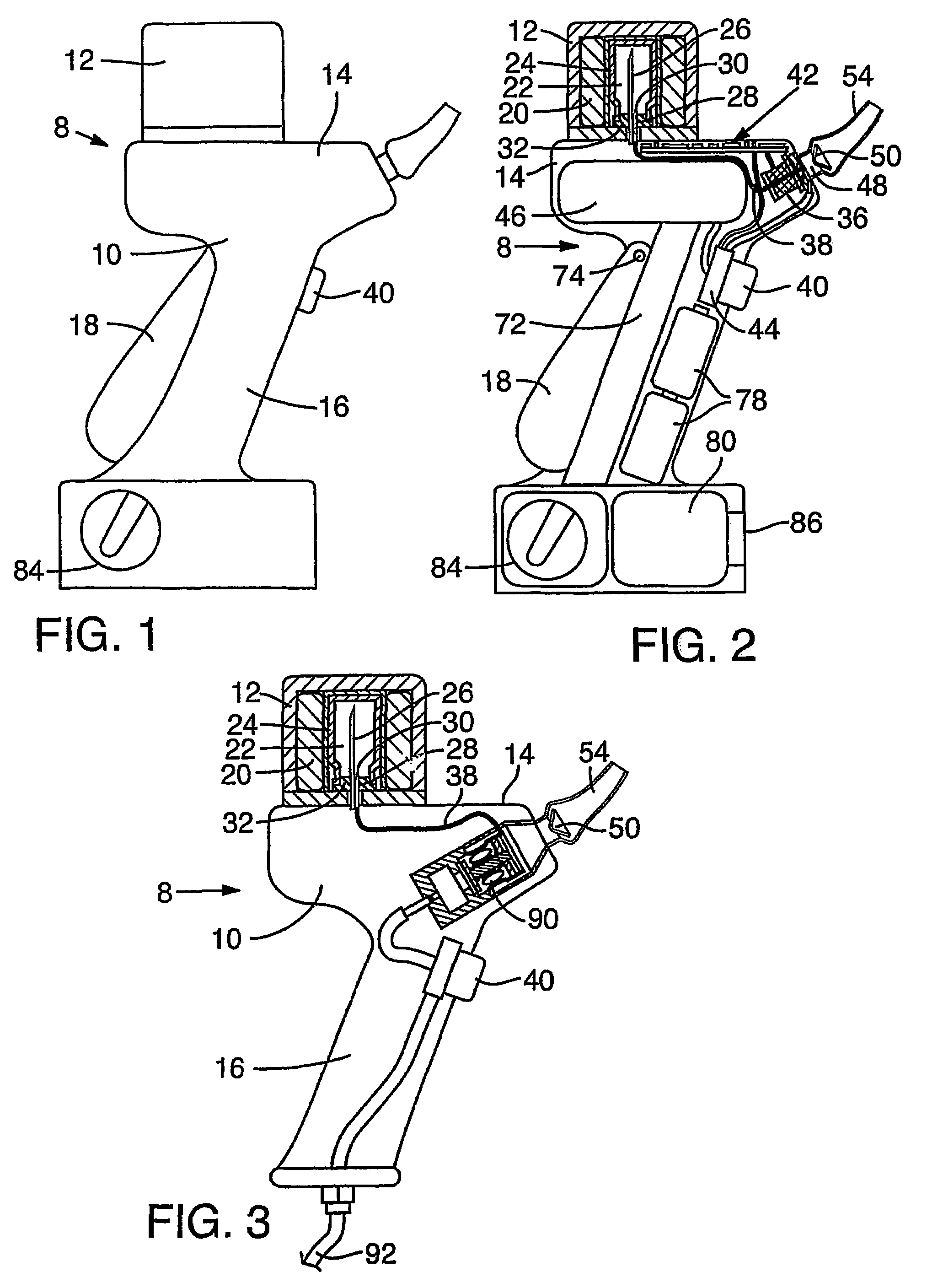Systems and methods for aerosol delivery of agents
a technology of aerosol and agent, applied in the field of agents delivery, can solve the problems of affecting the effectiveness of treatment, so as to prevent contamination of the system and reduce the effect of treatmen
- Summary
- Abstract
- Description
- Claims
- Application Information
AI Technical Summary
Benefits of technology
Problems solved by technology
Method used
Image
Examples
Embodiment Construction
[0042]The present disclosure is directed to methods and systems, including devices, for delivery of agents, preferably by aerosol delivery. Preferred systems for such delivery comprise jet nebulizer systems, pneumatic and ultrasonic aerosol generation systems. Preferred methods comprise administration of agents for treatment of living organisms, such as for methods of vaccination.
[0043]Use of the present system for agent delivery, such as for vaccination purposes, provides many benefits. The present system replaces the use of needles and syringes, and reduces the costs of agent delivery. Additionally, the present system allows for treatment of patients by less-trained staff, another cost saving benefit, and also helps prevent the spread of blood borne diseases by reused needles.
[0044]The aerosol delivery systems and methods of the present system are capable of providing agents in a continuous aerosol stream at a steady flow rate, may or may not need electrical power, are portable, a...
PUM
 Login to View More
Login to View More Abstract
Description
Claims
Application Information
 Login to View More
Login to View More - R&D
- Intellectual Property
- Life Sciences
- Materials
- Tech Scout
- Unparalleled Data Quality
- Higher Quality Content
- 60% Fewer Hallucinations
Browse by: Latest US Patents, China's latest patents, Technical Efficacy Thesaurus, Application Domain, Technology Topic, Popular Technical Reports.
© 2025 PatSnap. All rights reserved.Legal|Privacy policy|Modern Slavery Act Transparency Statement|Sitemap|About US| Contact US: help@patsnap.com



